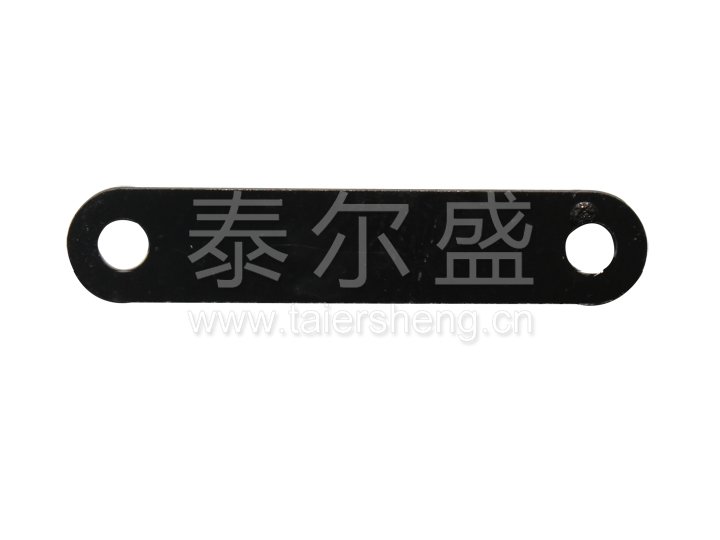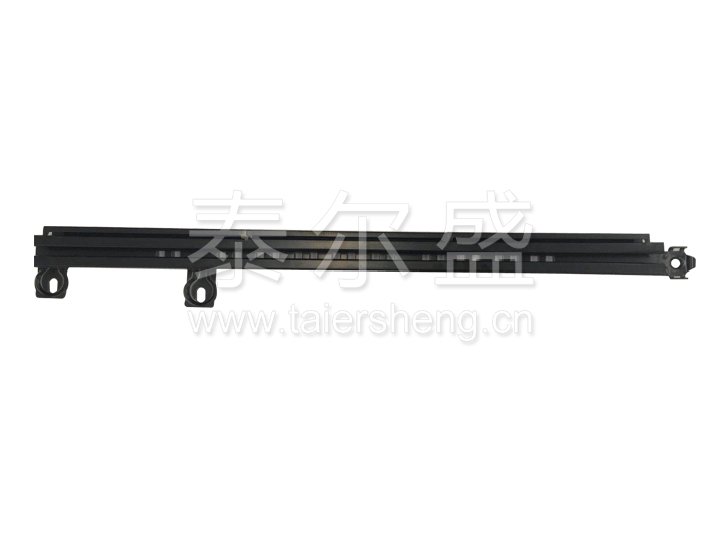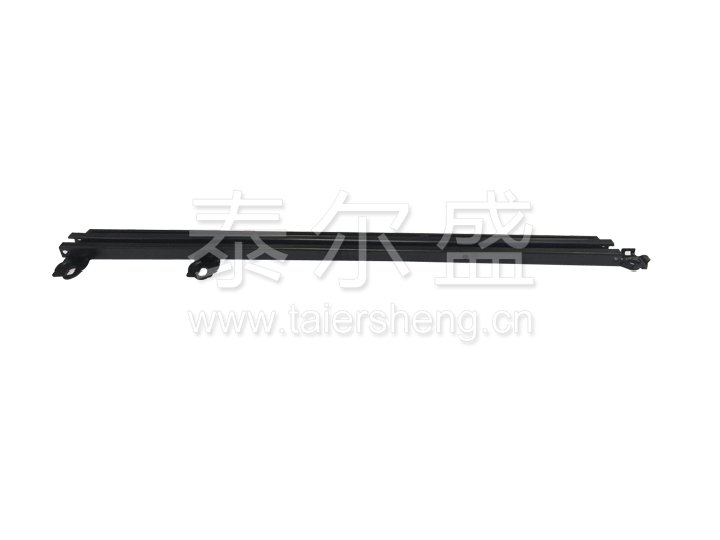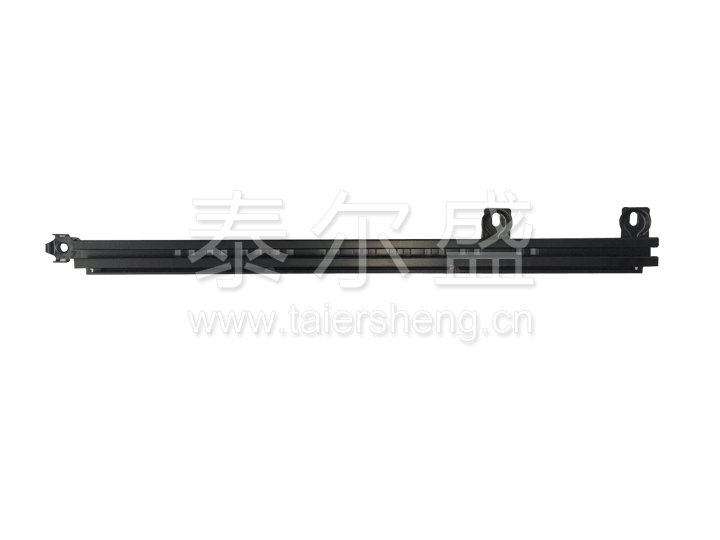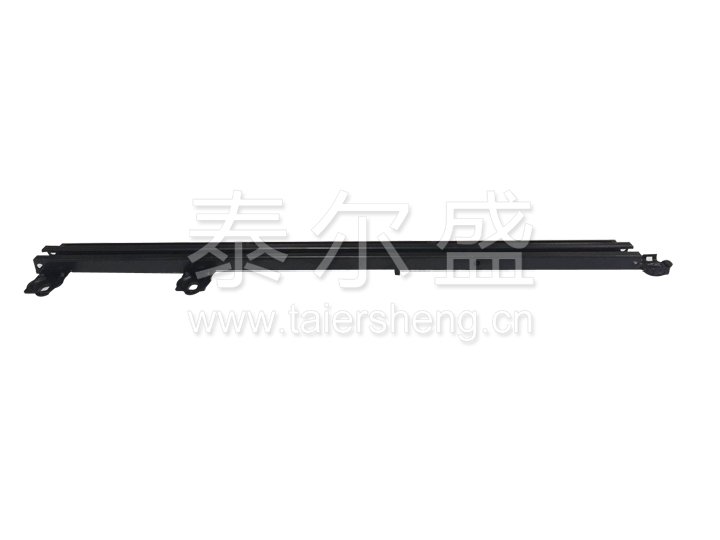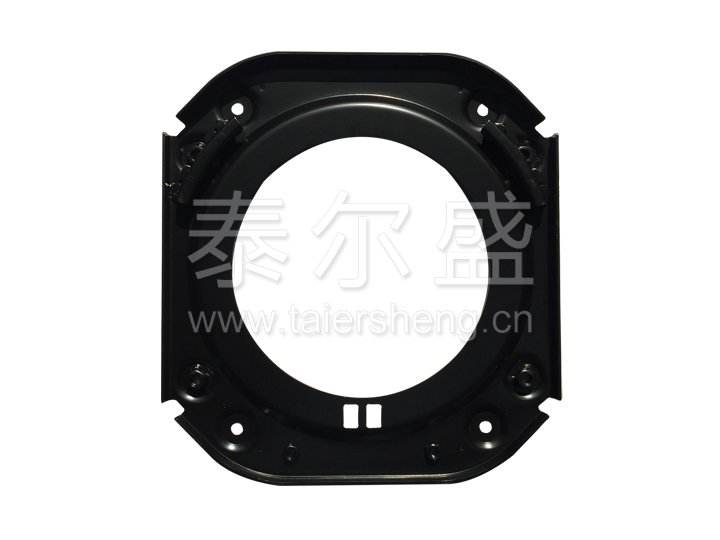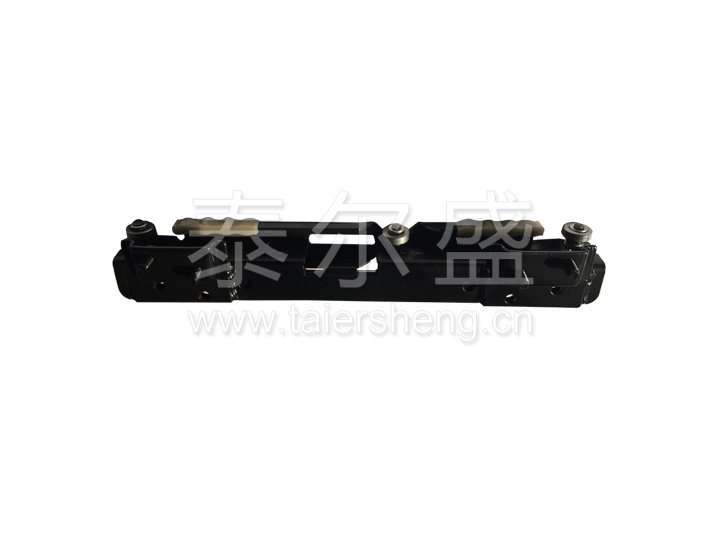Location: Homepage > News > Industry news
Industry news
Nine trends in the development of the automotive mold industry
Source: | Date:
2018-02-08
| Hits:
Keywords: Nine trends in the development of the automotive mold industry
The mold is the basic process equipment of the automobile industry. More than 90% of parts and components in automobile production rely on mold forming. Luo Baihui, a mold expert, said that the production of an ordinary car takes about 1500 sets of molds, of which about 1,000 sets of stamping dies. In the development of new models, 90% of the workload has been carried out around the changes in the body profile. About 60% of new vehicle development costs are used for the development of bodywork and stamping processes and equipment. About 40% of the vehicle manufacturing cost is the cost of the body stamping and its assembly.
In the development of automotive mold industry at home and abroad, mold technology presents the following development trends.
First, the simulation of the stamping process (CAE) has become more prominent
In recent years, with the rapid development of computer software and hardware, the simulation technology (CAE) of the press forming process has played an increasingly important role. In the United States, Japan, Germany and other developed countries, CAE technology has become a necessary part of the mold design and manufacturing process. It is widely used to predict molding defects, optimize the stamping process and mold structure, improve the reliability of mold design, and reduce the test time. Many domestic automotive mold companies have also made remarkable progress in the application of CAE, and have obtained good results. The application of CAE technology can greatly save the cost of tryout and shorten the development cycle of stamping die. It has become an important means to ensure the quality of the die. CAE technology is gradually changing the mold design from experience design to scientific design.
Second, the mold three-dimensional design status will be consolidated
The three-dimensional design of the mold is an important part of the digital mold technology and is the basis for the integration of mold design, manufacture, and inspection. Toyota, U.S. General Motors and other companies have achieved three-dimensional design of the mold and achieved good results. Some practices taken abroad in the three-dimensional design of molds are worth learning from. In addition to facilitating the realization of integrated manufacturing, the three-dimensional design of the mold has another advantage that it is easy to interfere with inspections and can perform motion interference analysis, solving a problem in two-dimensional design.
Third, digital mold technology has become the mainstream direction
The rapid development of digital mold technology in recent years is an effective way to solve many problems faced in the development of automotive molds. The so-called digital mold technology is the application of computer technology or computer-aided technology (CAX) in the mold design and manufacturing process. Summing up the successful experience of computer-aided technology applied by domestic and foreign auto mold enterprises, the digital automotive mold technology mainly includes the following aspects: 1 Design for manufacturability (DFM), that is, consider and analyze manufacturability during design to ensure the success of the process. 2 Assist technology for mold surface design, development of intelligent surface design technology. 3CAE assists in the analysis and simulation of the stamping process, predicting and resolving possible defects and forming problems. 4 Replace traditional 2D designs with 3D mold design. 5 mold manufacturing process using CAPP, CAM and CAT technology. 6 Deal with the problems that arise in the trial moulding process and stamping production under the guidance of digital technology.
Fourth, rapid development of mold processing automation
Advanced processing technology and equipment are important foundations for increasing productivity and ensuring product quality. It is not uncommon for advanced automotive mold companies to have dual-table CNC machine tools, automatic tool changer (ATC), automatic processing of optoelectronic control systems, and online workpiece measurement systems. CNC machining has evolved from simple surface machining to full-scale machining of surface and structural surfaces. From low-to-medium-speed machining to high-speed machining, processing automation technology has developed rapidly.
Fifth, high-strength steel stamping technology is the future direction of development
High-strength steels have excellent characteristics in terms of yield ratio, strain hardening characteristics, strain distribution ability and collisional energy absorption, and their use in automobiles is increasing. At present, the high-strength steels used in automobile stampings are mainly paint-hardened steel (BH steel), dual-phase steel (DP steel), and phase change induced plasticity steel (TRIP steel). The ULSAB project that 97% of the ULSAB-AVC models introduced in 2010 will be high-strength steels. The proportion of advanced high-strength steel plates in the entire vehicle will exceed 60%, of which the dual phase The proportion of steel will account for 74% of the steel plates for vehicles. Nowadays, a large number of mild steel series, mainly IF steels, will be replaced by high-strength steel plate series, and high-strength low-alloy steels will be replaced by dual-phase steels and ultra-high-strength steel plates. At present, the application of high-strength steel plates for domestic auto parts is still limited to structural parts and beam parts, and the tensile strength of the materials used is mostly below 500 MPa. Therefore, the rapid mastery of high-strength steel stamping technology is an important issue to be solved urgently in China's automotive mold industry.
Six, new mold products launched at the right time
With the development of high-efficiency and automation of automotive stamping production, progressive die will be more widely used in the production of automotive stamping parts. The complex shape stamping parts, especially the small and medium-sized complicated stamping parts which need to be punched in the order of many pairs of punches in the conventional process, are more and more adopting progressive die forming. Progressive die is a kind of high-tech die product, which has great technical difficulty, high manufacturing precision, and long production cycle. Multi-position progressive die will be one of China's key development mold products.
Seven, mold materials and surface treatment technology will be reused
The quality and performance of the mold material are important factors that affect the quality, life and cost of the mold. In recent years, in addition to the continuous availability of a variety of high toughness and high wear resistance cold work die steels, flame quenching cold work die steels, and powder metallurgy cold work die steels, it is worthwhile to use cast iron materials for large and medium press dies abroad. Concerned about the development trend. Ductile iron has good toughness and wear resistance, its welding performance, processability, surface quenching performance are also better, and the cost is lower than the alloy cast iron, so more applications in the automotive stamping die.
Eight, the scientific and information management is the development direction of the mold enterprises
Another important aspect of the development of automotive mold technology is the scientific and informatization of management. The scientization of management has enabled mold companies to continue to develop in the direction of Just-in-Time Manufacturing and Lean Production. The management of enterprises is more precise, the production efficiency is greatly improved, and the invalid institutions, links, and personnel are continuously streamlined. . With the advancement of modern management technology, many advanced information management tools include enterprise resource management system (ERP), customer relationship management (CRM), supply chain management (SCM), project management (PM), etc. Widely used.
Nine, the refinement of the mold is an inevitable trend
The so-called fine-mold manufacturing is the development process and manufacturing result of the mold, which is specifically represented by the rationalization of the stamping process and the design of the mold structure, the high precision of the mold processing, the high reliability of the mold product, and the strict technical management. Sex. In fact, mold fine manufacturing is not a single technology, and it is a comprehensive reflection of design, processing, and management technology. In addition to technological excellence, the realization of the refinement of mold manufacturing must be ensured by strict management.
In the development of automotive mold industry at home and abroad, mold technology presents the following development trends.
First, the simulation of the stamping process (CAE) has become more prominent
In recent years, with the rapid development of computer software and hardware, the simulation technology (CAE) of the press forming process has played an increasingly important role. In the United States, Japan, Germany and other developed countries, CAE technology has become a necessary part of the mold design and manufacturing process. It is widely used to predict molding defects, optimize the stamping process and mold structure, improve the reliability of mold design, and reduce the test time. Many domestic automotive mold companies have also made remarkable progress in the application of CAE, and have obtained good results. The application of CAE technology can greatly save the cost of tryout and shorten the development cycle of stamping die. It has become an important means to ensure the quality of the die. CAE technology is gradually changing the mold design from experience design to scientific design.
Second, the mold three-dimensional design status will be consolidated
The three-dimensional design of the mold is an important part of the digital mold technology and is the basis for the integration of mold design, manufacture, and inspection. Toyota, U.S. General Motors and other companies have achieved three-dimensional design of the mold and achieved good results. Some practices taken abroad in the three-dimensional design of molds are worth learning from. In addition to facilitating the realization of integrated manufacturing, the three-dimensional design of the mold has another advantage that it is easy to interfere with inspections and can perform motion interference analysis, solving a problem in two-dimensional design.
Third, digital mold technology has become the mainstream direction
The rapid development of digital mold technology in recent years is an effective way to solve many problems faced in the development of automotive molds. The so-called digital mold technology is the application of computer technology or computer-aided technology (CAX) in the mold design and manufacturing process. Summing up the successful experience of computer-aided technology applied by domestic and foreign auto mold enterprises, the digital automotive mold technology mainly includes the following aspects: 1 Design for manufacturability (DFM), that is, consider and analyze manufacturability during design to ensure the success of the process. 2 Assist technology for mold surface design, development of intelligent surface design technology. 3CAE assists in the analysis and simulation of the stamping process, predicting and resolving possible defects and forming problems. 4 Replace traditional 2D designs with 3D mold design. 5 mold manufacturing process using CAPP, CAM and CAT technology. 6 Deal with the problems that arise in the trial moulding process and stamping production under the guidance of digital technology.
Fourth, rapid development of mold processing automation
Advanced processing technology and equipment are important foundations for increasing productivity and ensuring product quality. It is not uncommon for advanced automotive mold companies to have dual-table CNC machine tools, automatic tool changer (ATC), automatic processing of optoelectronic control systems, and online workpiece measurement systems. CNC machining has evolved from simple surface machining to full-scale machining of surface and structural surfaces. From low-to-medium-speed machining to high-speed machining, processing automation technology has developed rapidly.
Fifth, high-strength steel stamping technology is the future direction of development
High-strength steels have excellent characteristics in terms of yield ratio, strain hardening characteristics, strain distribution ability and collisional energy absorption, and their use in automobiles is increasing. At present, the high-strength steels used in automobile stampings are mainly paint-hardened steel (BH steel), dual-phase steel (DP steel), and phase change induced plasticity steel (TRIP steel). The ULSAB project that 97% of the ULSAB-AVC models introduced in 2010 will be high-strength steels. The proportion of advanced high-strength steel plates in the entire vehicle will exceed 60%, of which the dual phase The proportion of steel will account for 74% of the steel plates for vehicles. Nowadays, a large number of mild steel series, mainly IF steels, will be replaced by high-strength steel plate series, and high-strength low-alloy steels will be replaced by dual-phase steels and ultra-high-strength steel plates. At present, the application of high-strength steel plates for domestic auto parts is still limited to structural parts and beam parts, and the tensile strength of the materials used is mostly below 500 MPa. Therefore, the rapid mastery of high-strength steel stamping technology is an important issue to be solved urgently in China's automotive mold industry.
Six, new mold products launched at the right time
With the development of high-efficiency and automation of automotive stamping production, progressive die will be more widely used in the production of automotive stamping parts. The complex shape stamping parts, especially the small and medium-sized complicated stamping parts which need to be punched in the order of many pairs of punches in the conventional process, are more and more adopting progressive die forming. Progressive die is a kind of high-tech die product, which has great technical difficulty, high manufacturing precision, and long production cycle. Multi-position progressive die will be one of China's key development mold products.
Seven, mold materials and surface treatment technology will be reused
The quality and performance of the mold material are important factors that affect the quality, life and cost of the mold. In recent years, in addition to the continuous availability of a variety of high toughness and high wear resistance cold work die steels, flame quenching cold work die steels, and powder metallurgy cold work die steels, it is worthwhile to use cast iron materials for large and medium press dies abroad. Concerned about the development trend. Ductile iron has good toughness and wear resistance, its welding performance, processability, surface quenching performance are also better, and the cost is lower than the alloy cast iron, so more applications in the automotive stamping die.
Eight, the scientific and information management is the development direction of the mold enterprises
Another important aspect of the development of automotive mold technology is the scientific and informatization of management. The scientization of management has enabled mold companies to continue to develop in the direction of Just-in-Time Manufacturing and Lean Production. The management of enterprises is more precise, the production efficiency is greatly improved, and the invalid institutions, links, and personnel are continuously streamlined. . With the advancement of modern management technology, many advanced information management tools include enterprise resource management system (ERP), customer relationship management (CRM), supply chain management (SCM), project management (PM), etc. Widely used.
Nine, the refinement of the mold is an inevitable trend
The so-called fine-mold manufacturing is the development process and manufacturing result of the mold, which is specifically represented by the rationalization of the stamping process and the design of the mold structure, the high precision of the mold processing, the high reliability of the mold product, and the strict technical management. Sex. In fact, mold fine manufacturing is not a single technology, and it is a comprehensive reflection of design, processing, and management technology. In addition to technological excellence, the realization of the refinement of mold manufacturing must be ensured by strict management.
News
- 2018-03-27 > What is the overall process of mold design and manufacturing?
- 2018-03-27 > Will the seat frame have welding standards?
- 2018-03-27 > What is the production process of the car seat frame?
- 2018-03-27 > Can the car front cushion recliner be repaired?
- 2018-03-27 > Does the difference in the level of flatness in the car seat affect the slide?
- 2018-03-27 > CNC machine tool is the key to automotive mold
- 2018-03-20 > Automotive mold high-speed cutting technology
- 2018-02-21 > What are the categories of automotive models?
- 2018-02-08 > Nine trends in the development of the automotive mold industry
- 2018-01-05 > 2018 China Car Seat Market Research and Development Trend Forecast Report
Products



